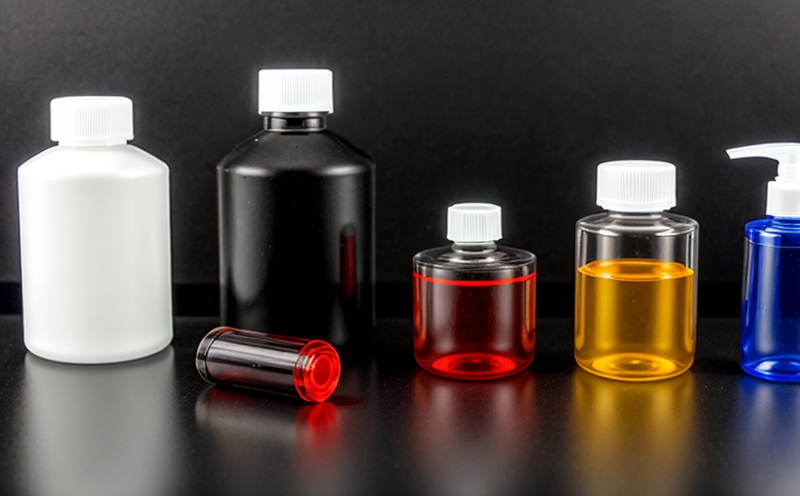DIN 53455 Stress Strain Testing of Nano Reinforced Plastics
The DIN 53455 standard is a crucial benchmark in the field of materials testing, particularly for nano-reinforced plastics. This method is designed to assess the mechanical properties and performance of these advanced composite materials under stress-strain conditions. The primary purpose is to ensure that nano additives are effectively incorporated into polymers without compromising their structural integrity or mechanical capabilities.
When performing DIN 53455 tests, it is essential to consider several key factors: specimen preparation, testing equipment, and the interpretation of results. Specimens must be carefully prepared to simulate real-world conditions as closely as possible. This involves selecting appropriate sample shapes (such as dog-bone or dumbbell-shaped specimens) that can withstand the applied stress without immediate failure.
The testing apparatus used for DIN 53455 should include a universal testing machine capable of applying controlled stress and strain rates. The machine must be calibrated to meet ISO standards, ensuring accurate measurements throughout the test. Strain gauges are placed on the specimen to monitor deformation accurately. It is also important that the testing environment maintains consistent temperature and humidity levels as specified in DIN 53455.
During the test, stress is gradually applied until the material reaches its yield point or ultimate tensile strength. The strain gauge readings are continuously recorded alongside the applied force to create a precise stress-strain curve. This curve provides critical insights into how well the nano additives have reinforced the polymer matrix. Commonly measured parameters include elongation at break, modulus of elasticity, and toughness.
Interpreting the results involves comparing them against established benchmarks for similar materials. If the nano-reinforced plastic meets or exceeds these benchmarks, it indicates successful integration of the additives. However, if there is a significant deviation from expected values, further investigation into production methods or additive properties may be necessary.
The importance of DIN 53455 testing cannot be overstated, especially in industries reliant on lightweight yet robust materials like automotive manufacturing and aerospace engineering. By adhering to this standard, manufacturers can ensure their products meet stringent quality requirements while maintaining environmental sustainability goals through optimized material use.
Quality managers and compliance officers play a vital role in overseeing these tests. They must stay updated with the latest developments in nanotechnology and material science to implement effective testing protocols that align with industry best practices. R&D engineers benefit from thorough DIN 53455 testing, as it helps identify optimal nano additive concentrations for specific applications.
For procurement professionals, understanding this standard ensures they source materials from reputable suppliers who adhere to high-quality standards. This collaboration between various stakeholders is essential in driving innovation and reliability across the supply chain.
Why It Matters
The significance of DIN 53455 testing lies in its ability to validate the performance characteristics of nano-reinforced plastics, which are increasingly being used in various sectors due to their enhanced mechanical properties. These materials offer significant advantages over conventional polymers by providing greater strength-to-weight ratios, better thermal stability, and improved resistance to chemical degradation.
In automotive applications, for instance, reduced weight leads to lower fuel consumption and emissions, contributing positively towards environmental sustainability initiatives. Aerospace manufacturers also leverage these materials for their durability in extreme conditions. The ability of nano-reinforced plastics to withstand high temperatures and pressures makes them ideal candidates for engine components where traditional alloys might fail.
From a business perspective, ensuring compliance with standards like DIN 53455 reduces the risk of product failures or recalls, protecting brand reputation and consumer trust. Additionally, adherence to such internationally recognized norms enhances market access by meeting regulatory requirements across different regions.
Applied Standards
The DIN 53455 standard is part of a broader framework aimed at standardizing mechanical tests for plastics and composites. It builds upon earlier standards like ISO 178, which defines basic tensile testing methods, but specifically focuses on the unique challenges posed by nano-reinforced materials.
As nanotechnology continues to evolve, so too do the standards governing its application within various industries. Collaboration between international bodies such as ASTM International and the European Committee for Standardization (CEN) ensures that these guidelines remain relevant and up-to-date with technological advancements.
The standard outlines specific procedures for preparing test specimens, setting up test equipment, and interpreting results. It emphasizes the importance of maintaining consistent environmental conditions during testing to obtain reliable data. Compliance with DIN 53455 not only facilitates better product design but also promotes transparency within supply chains, fostering trust among all parties involved.
Environmental and Sustainability Contributions
The integration of nano additives into plastics can lead to substantial environmental benefits through weight reduction. Lightweight vehicles consume less fuel, resulting in lower greenhouse gas emissions during operation. Similarly, lighter aircraft components contribute to reduced energy consumption, supporting global efforts towards cleaner transportation solutions.
Nano-reinforced materials also enhance recyclability by improving mechanical properties without compromising on sustainability goals. This makes them more suitable for end-of-life disposal scenarios where recycling processes need robust materials that do not degrade during processing.
Moreover, the use of these advanced composites helps minimize raw material extraction pressures, promoting responsible sourcing practices throughout production cycles. By optimizing material performance through careful selection and application of nano additives, manufacturers contribute to sustainable development objectives while maintaining competitive edge in global markets.





